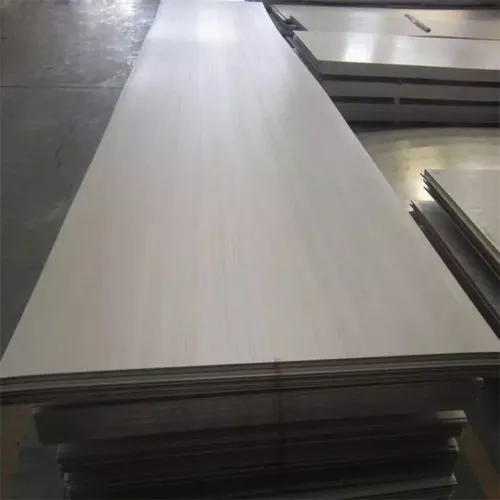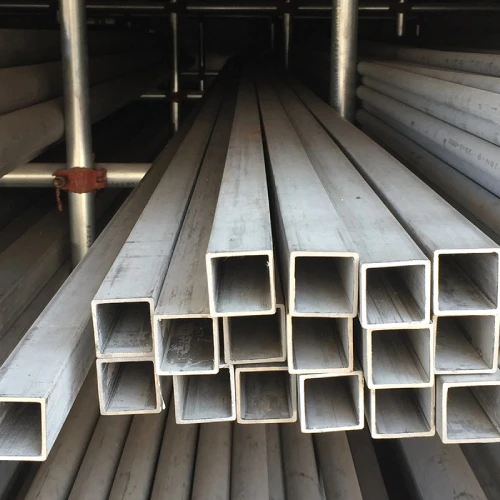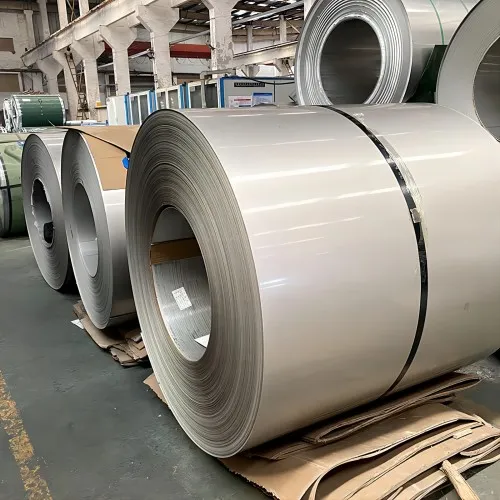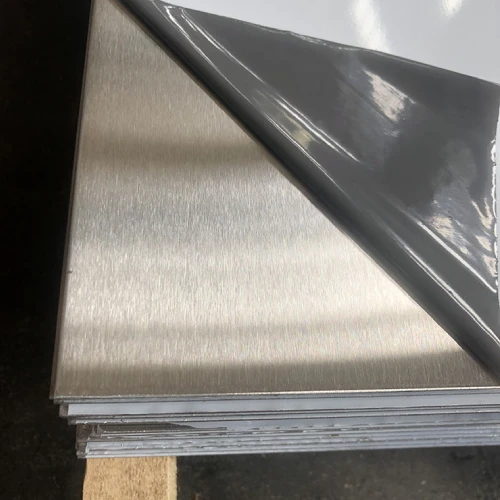316L stainless steel coil is recognized for several key properties that make it an exceptional material for a wide range of applications:
Superior Corrosion Resistance: 316L stainless steel is highly resistant to corrosion in a variety of environments, including acidic, alkaline, and chloride-containing environments. This makes it ideal for use in marine and chemical processing applications where exposure to corrosive elements is common.
Enhanced Weldability: The low carbon content of 316L stainless steel minimizes the risk of carbide precipitation during welding, which can otherwise lead to intergranular corrosion. This allows for better weld quality and longer-lasting performance in welded structures.
High Strength and Durability: 316L stainless steel maintains excellent mechanical properties, including high tensile strength and durability, even in challenging conditions. It can withstand heavy loads and resist wear and tear, making it suitable for demanding applications.
Non-Magnetic in Annealed Condition: Like other austenitic stainless steels, 316L is non-magnetic when annealed, which can be advantageous in certain applications where magnetism is undesirable.
Aesthetic Appeal: The material has a smooth, attractive finish that is easy to clean and maintain, making it a popular choice for both functional and decorative applications.
Applications of 316L Stainless Steel Coil
316L stainless steel coil is widely used across various industries, particularly in applications where corrosion resistance and durability are paramount. Some of the most common applications include:
Marine Environments: 316L stainless steel is ideal for marine applications such as boat fittings, deck hardware, and coastal architectural components due to its exceptional resistance to seawater corrosion.
Chemical Processing: The material’s ability to withstand exposure to aggressive chemicals makes it a preferred choice for chemical processing equipment, including tanks, valves, and heat exchangers.
Pharmaceutical and Medical Devices: 316L stainless steel’s high level of hygiene and corrosion resistance makes it suitable for pharmaceutical equipment, surgical instruments, and medical implants where sterility and biocompatibility are crucial.
Food and Beverage Industry: The coil is used in food processing equipment, kitchen appliances, and storage tanks due to its resistance to food acids and its non-reactive surface, ensuring compliance with health and safety standards.
Construction and Architecture: 316L stainless steel is employed in exterior cladding, railings, and other architectural elements that require both aesthetic appeal and long-term durability in corrosive environments.
Advantages of Choosing 316L Stainless Steel Coil
When selecting a material for your project, 316L stainless steel coil offers several compelling advantages:
Unmatched Corrosion Resistance: The combination of chromium, nickel, and molybdenum ensures that 316L stainless steel performs exceptionally well in corrosive environments, reducing the risk of degradation and extending the lifespan of your products.
Weldability and Formability: The low carbon content allows for easy welding and forming, making it versatile for complex fabrications and ensuring high-quality joints without compromising corrosion resistance.
Long-Term Durability: 316L stainless steel’s strength and resistance to wear make it a reliable choice for applications that demand long-lasting performance, even under harsh conditions.
Versatile Applications: Whether for industrial, medical, marine, or architectural use, 316L stainless steel coil can meet the rigorous demands of various sectors, offering both functionality and aesthetic appeal.
Conclusion
316L stainless steel coil is a top-tier material that delivers exceptional corrosion resistance, strength, and durability in the most challenging environments. Whether you are working on a project in the marine, chemical, or food processing industry, or need a material that offers superior weldability and long-term performance, 316L stainless steel coil is the ideal choice. Explore our range of 316L stainless steel coils today and find the perfect material to meet your specific needs.
Common surfaces

Stainless Steel Standards Comparison Table
| STS | USA | UNS | CHINA | EURONORM | RUSSIA | SWEDISH | JAPANESE | |
|---|---|---|---|---|---|---|---|---|
| GRADE | AISI/ASTM | NO | GB | NO | NAME | GOST | SS | JIS |
| 201 | 201 | S20100 | 12Cr17Mn6Ni5N | 1.4372 | - | - | - | SUS 201 |
| 301 | 301 | S30100 | 12Cr17Ni7 | 1.4310 | X 12 CrNi 17 7 | - | 2331 | SUS 301 |
| 303 | 303 | S30300 | 1Cr18Ni9MoZr | 1.4305 | X 10 CrNiS 18 9 | - | 2346 | SUS 303 |
| 304 | 304 | S30400 | 06Cr18Ni9 | 1.4301 | X 6 CrNi 18 10 | 08KH18N10 06KH18N11 |
2332 | SUS 304 |
| 304L | 304L | S30403 | 022Cr19Ni10 | 1.4307 | X 3 CrNi 18 10 | 03KH18N11 | 2352 | SUS 304L |
| 316 | 316 | S31600 | 0Cr17Ni12Mo2 | 1.4401 | X 6 CrNiMo 17 12 2 | - | 2347 | SUS 316 |
| 316L | 316L | S31603 | 022Cr17Ni12Mo2 | 1.4404 | X 3 CrNiMo 17 12 2 | - | 2348 | SUS 316L |
| 316Ti | 316Ti | S31635 | 0Cr18Ni12Mo2Ti | 1.4571 | X 6 CrNiMoTi 17 12 2 | 08KH17N13M2T 10KH17N13M2T |
2350 | - |
| 321 | 321 | S32100 | 0Cr18Ni11Ti | 1.4541/1.4878 | X 6 CrNiTi 18 10 | 12KH18N10T | 2337 | SUS 321 |
| 347 | 347 | S34709 | 0Cr18Ni11Nb | 1.4550 | X 6 CrNiNb 18 10 | - | 2338 | SUS 347 |
| 309S | 309S | S30908 | 0Cr23N13 | 1.4833 | X 6 CrNi 22 13 | 20KH23N18 | - | SUS 309S |
| 310S | 310S | S31008 | 06Cr25Ni20 | 1.4842 | X 6 CrNi 25 20 | 20KH25N20S2 | 2361 | SUS 310S |
| 416 | 416 | S41600 | Y1Cr13 | 1.4005 | X12CrS13 | - | 2380 | SUS 416 |
| 2205 | 2205 | S32205/S31803 | 00Cr22Ni5Mo3N | 1.4462 | X2CrNiMoN22-5-3 | 02Ch22N5AM2 | 2377 | SUS 329J3L |
| 2507 | 2507 | S32750 | 00Cr25Ni7Mo4N | 1.4410 | X 2 CrNiMoN 25-7-4 | - | - | - |
| 904L | 904L | N08904 | - | 1.4539 | - | - | - | - |
| 254SMO | 254SMO | S31254 | - | 1.4547 | X1CrNiMoCuN20-18-7 | - | 2378 | - |
| 253MA | 253MA | S30815 | - | 1.4835 | X9CrNiSiNCe21-11-2 | - | 2368 | - |
| 17-4PH/630 | 17-4PH/630 | S17400 | 0Cr17Ni4Cu4Nb | 1.4542 | X5CrNiCuNb16-4 | 05Ch16N4D2B | - | SUS630 |

 316L stainless steel coil is a premium-grade material that is highly sought after for its superior corrosion resistance, excellent strength, and enhanced durability, especially in harsh and corrosive environments. As a low-carbon variant of the 316 stainless steel family, 316L stainless steel offers improved weldability and greater resistance to intergranular corrosion after welding.
316L stainless steel coil is a premium-grade material that is highly sought after for its superior corrosion resistance, excellent strength, and enhanced durability, especially in harsh and corrosive environments. As a low-carbon variant of the 316 stainless steel family, 316L stainless steel offers improved weldability and greater resistance to intergranular corrosion after welding.  AISI 904L Stainless Steel Plate N08904 1.4539
AISI 904L Stainless Steel Plate N08904 1.4539
 AISI 304L Stainless Steel Plate SUS304L 1.4306
AISI 304L Stainless Steel Plate SUS304L 1.4306
 2205 Stainless Steel Tube S32205 1.4462
2205 Stainless Steel Tube S32205 1.4462
 AISI 321 Stainless Steel Coil SUS321 1.4541
AISI 321 Stainless Steel Coil SUS321 1.4541
 AISI 439 Stainless Steel Plate SUS430LX 1.4510
AISI 439 Stainless Steel Plate SUS430LX 1.4510
